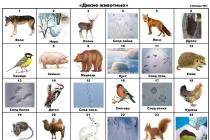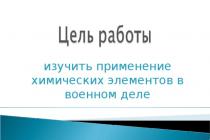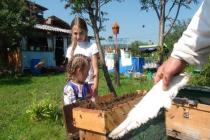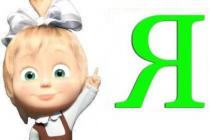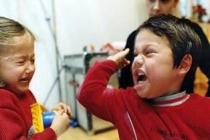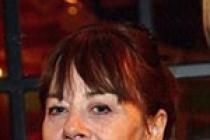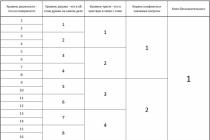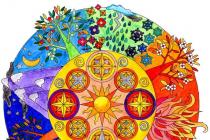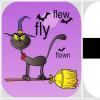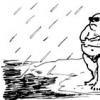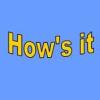Raisa Fazulzyanova
Summary of a lesson on ecology in the senior group “Wild animals of our region”
Ecology« Wild animals of our region»
Regions: cognition, communication, socialization, reading fiction, game, cognitive - research activity.
Goals: expand children's ideas about wild animals(fox, bear, hare, squirrel, wolf, hedgehog, their way of life.
Tasks:
1. Educational: Pin titles wild animals and their young. Introduce wild animals living in our edges.
2. Developmental: Work on word formation.
3. Educators: Develop social skills: ability to work in group, negotiate, take into account the opinions of others. Cultivate curiosity, develop knowledge about the interconnection of everything alive in nature to promote awareness of the special relationship of people to wild animals.
Preliminary work: Learning riddles, didactic games, reading fairy tales, finger games.
Methodical techniques: conversation, showing explanation, surprise moment, questions for children.
Materials: pictures with images wild animals, riddles, use of slides, coloring books for children.
Move: Directly - educational activities.
Children's mood:
Woke up with the sun
They stretched and smiled.
Hold your hands tightly
Children sit on chairs. A monkey enters. She came from Africa wants to make friends with animals of our region, wants to know everything about them.
Guys! Shall we help the monkey? (Yes).
And to do this, first guess puzzles:
Not a lamb or a cat,
Wears a fur coat all year round.
Gray fur coat for summer
A different color for winter (hare)
Cunning cheat
Red head
Lush tail-beauty
Who is this (fox).
A fluffy tail sticks out from the top,
What is this strange animal?
Cracks nuts finely
Well of course it is (squirrel).
In a dense forest under a Christmas tree,
showered with leaves,
There's a bag of needles lying
Piercing and alive. (hedgehog).
Who walks around angry and hungry in the cold winter (wolf).
The owner of the forest wakes up in the spring
And in winter, under the blizzard howl
He sleeps in a snow hut.
Posting pictures:
Well done guys, they solved all the riddles.
Tell me and the monkey who these riddles are about? (O animals)
Where do all these people live? animals(In the forest, in nature)
And who feeds them? (they find food for themselves, get it)
What can you call animals that find and obtain food for themselves?
(wild animals)
Conclusion: Animals are called wild animals living in the wild and foraging for themselves.
What do they eat? wild animals? (grass, tree fruits, nuts, cones, other animals.
What can you call animals that eat grass (herbivores).
A animals who feed on others are called animals(predators).
A, animals which feed on both plants and animals(omnivores)
When there is no more grass, what do they need to do so as not to die of hunger.
(stock food)
Is that all animals store food for the winter?, and the bear stores food for itself (no, he sleeps in winter).
Bears eat heavily in the summer, store fat, and in the fall they prepare a home for themselves where they spend the winter and hibernate.
Hibernation is a sedentary, sleepy lifestyle.
And what other animals sleep in winter? (hedgehog, badger) slide show.
Some animals As winter approaches, they change color. Why do you think they do this?
Children's answers.
Changing coat color to another is called molting. Which animals change their coats? (hare, squirrel)
And now we're a little let's rest:
Fizminutka:
Stomp the bear once or twice
Clap the bear once or twice
Squat with me bro
Hands up, forward and down.
Smile and sit down.
Guys! the monkey brought us interesting games, let's play!
1. "Who lives where?"
Where does the squirrel live? (in double) - (slide 1)
Where does the bear live? (in the den) – (slide 2)
Where does the wolf live? (in the lair) – (slide 3)
Where do the hedgehog and the fox live? (in the mink) – (slide 4)
Where does the hare live? (under a bush, the bunny doesn’t build a house) – (slide 5)
2. Animals you and your cubs were walking on the lawn and got lost, help the cubs find their mothers and name them.
Little fox, who has cubs? (at the fox).
Bunny, who has bunnies? (at the hare).
Baby squirrel, who has baby squirrels? (at the squirrel).
Who has a hedgehog? (hedgehogs).
Wolf cub, who has wolf cubs (she-wolves) .
Teddy bear, who has cubs? (she bears).
Well done guys helping the cubs find their mothers!
3. Game: "Herbivores, Carnivores, Omnivores"(children wear masks animals when the command is given "Day" All animals are walking, and when the command is given "Night",run to houses: herbivores in a green hoop, predators in a red hoop, omnivores in a blue hoop.)
4. Game: “Put the pieces together into a whole”
Who did you get? ,tell us about yours animal
Well done!
Well, guys, we introduced the monkey to wild animals of our region. Well done!
The monkey is very happy. She thanks you for interesting things class, that I learned a lot about my brothers. Let African animals are friends, with ours animals, and we are with all of them.
Because you did a good job, she wants to give you coloring books with animals and treat with fruits. On this class is over well done!
About which animals Did we talk to you today?
What new did you learn?
How did you help the monkey?
Did you like it class?
If you like it, pull the arms forward, and if not, hide them back.
Olga Galkina
Lesson notes for the senior group on speech development. Topic: “Wild Animals”
Subject: « Wild animals» .
Program content. Strengthen children's understanding of wild animals, their appearance, lifestyle in winter, habits.
Teach children to write descriptive stories using a graphic diagram. Expand and activate children's vocabulary on the topic « Wild animals» (animal, animal, horns, hooves, fur, skin, paw, den, hole, hollow, predatory, herbivore; change, molt, sleep, get, hunt). Improve grammatical structure speeches(use of nouns with suffixes -onok-, -enok-, -at-, -yat-).
Develop children's coherent speech, speech hearing, visual perception and attention; fine and gross motor skills. Foster love and respect for nature.
Individual work: Seek a complete answer from Vanya, Danila; continue to teach Kirill how to hold a pencil correctly.
Equipment:
Audio cassette with voices animals; description diagram animal; scheme-model of dwellings animals; drawing "Animals at Aibolit"; container with peas and flat figurines animals; cards with pictures animals; simple pencils; a basket with carrots, nuts and a jar of honey; Christmas trees.
Preliminary work: View slides of an image wild animals our forests and their children; conversation about life wild animals in winter. Learning finger gymnastics "Squirrel".
Reading a fairy tale by L. Tolstoy "Squirrel and Wolf", story by E. Charushin "Little foxes". Learning riddles about wild animals. Familiarization with the description scheme animal. A visit with parents to a circus performance and a school for young people.
Progress of the lesson.
Children enter group with quiet music.
Educator: - Children, what time of year has it come? (Winter).
That's right, winter-winter came to the cities and villages, wrapping the fields and forests in a white blanket. Look at the winter forest that has grown here group! I want to invite you to take a walk in the forest. Children, do you know who lives in the forest? (Children list the names of animals) .
How can you call them in one word? (Wild) .
Why are they called that? (Because they take care of themselves, get their own food).
How animals were preparing for winter? (The squirrel dried mushrooms and stocked up on nuts. The bear made a den for himself. The wolf, the hare and the fox faded: exchanged summer coats for winter ones.)
(An audio cassette with a recording of a bear's growl and a wolf's howl is turned on).
Oh, children, what are these sounds? This is the she-bear and the she-wolf calling on help: their children caught a cold and fell ill in the severe frosts. Who do you think can help them? (Dr. Aibolit)
Of course, this is the good doctor Aibolit, but we cannot get to the magic clearing, so I suggest you sit down at the tables and look at the picture that I painted when I was visiting Aibolit.
(The teacher hangs up the drawing.)
Who came to the doctor for treatment? (Bear with a bear cub, wolf with a wolf cub, fox with a fox cub, squirrel with a squirrel, hare with a hare).
The cubs were very afraid animals Aibolit: after all, they were still small and did not know that the doctor was kind. Therefore, Doctor Aibolit called them affectionately, but how - think up yourself and call kindly:
Bunny - (little bunny).
Teddy bear - (little bear).
Squirrel - (little squirrel).
Little fox - (little fox).
Teen Wolf - (little wolf).
So Aibolit cured all the sick animals! And the mothers took their babies home.
(A schematic image of the dwellings is posted wild animals)
Children, look at diagram: Can you guess what animal these dwellings belong to and what they are called?
This is a hole. A fox lives in it.
This is a den. A bear lives in it.
This is a hollow. A squirrel lives in it.
This is a bush. A hare is hiding under it.
Well done, you are very attentive and observant.
Ball game "Big and Small".
Now, children, let's play. Stand in a circle, and I will name a part of the wild body animal and throw you a ball, you will catch the ball and affectionately name the same part of the body of this cub animal and return the ball to me.
V. - The fox has a red head.
R. – The little fox has a red head.
V. - The wolf has sharp teeth.
R. – The wolf cub has sharp teeth.
V. – The hare has a short tail.
R. – The bunny has a short tail.
V. – The squirrel has black eyes.
R. – The little squirrel has little black eyes.
V. – Moose have long legs.
R. – The elk calf has long legs.
V. – The bear has a short tail.
R. – The bear cub has a short tail.
Great! And now I suggest you turn into animals: Kirill and Matvey are bears, go ahead, bearish. Katya is a fox, runs, like a fox. Semyon will be a wolf, and Danila and Vanya will be hares: Leap like a hare.
One, two, three - we turned into children again.
I have something for you surprise: This is the box. It is not simple, but filled with peas, but there is something inside. Now you have to find the figures by touch, and tell them which ones yourself.
(Children pull out flat figures wild animals.)
Now write down descriptions of those animals, which you took out of the box. A hint diagram will help you with this. First, you will tell us the name of your animal, is it wild or domestic, where lives: in the forest or with a person. Then describe what size it is, what its body is covered with, its structure, and what it eats.
A diagram of the story about animal.
Children write descriptive stories about their animals according to the scheme.
Well done boys! Shall we rest a little?
Physical education minute.
Like snow on a hill, snow,
And under the hill - snow, snow,
And on the tree there is snow, snow,
And under the tree - snow, snow,
And a bear sleeps under the snow.
Quiet, quiet, don't make noise.
Children, look at your tables. In front of you are envelopes. Take out the cards from there. Who is depicted on them? (children list animals) .
Is everything okay with yours? animals? (the fox is missing a tail; the bear is missing an ear; the squirrel is missing paws, etc.)
You see, the artist was in a hurry and did not have time to draw some parts of the body. Take pencils and complete the drawing yourself.
Katya, whose ear did you draw? (I drew a bear ear).
Kirill, and you, whose paw did you finish drawing? (I finished drawing the hare's foot) etc.
Now that's order! All the animals will be happy.
But still, children, in our winter forest wild animals are sad: after all, they also want people to take care of them sometimes. I prepared a basket with gifts, for whom do you think?
Honey is for the bear.
Nuts are for squirrels.
Carrots are for the hare.
Let's leave the basket in the forest and slowly hide ourselves. After all wild animals very shy and cautious. Say goodbye to our winter forest and wild animals.
Presentation
1 slide
Jumping through the trees,
Yes, the nuts are click-click.
(After each answer, the teacher shows a picture of the animal).
How did you guess?
What kind of squirrel?
2 slide
- Walks clubfoot in the summer,
And in winter he sucks his paw.
How do you understand the word clubfoot?
The teacher explains: “To walk with a clubfoot is to step with your heels apart, awkwardly, awkwardly.”
What kind of bear?
3 slide
Red-haired, cunning, steals chickens.
What does cunning mean?
What kind of fox is that?
4 slide
- The creeper crawls
He's carrying needles.
What else can you say about the hedgehog?
5 slide
- A long ear, a ball of fluff,
Jumps deftly and loves carrots.
What else can you say about the hare?
6 slide
Who is cold in winter
Walking around angry and hungry?
How to call these animals in one word?
Why do you think so? Where do they live?
Why are these animals called wild?
Carrying out the game "One-many"
One fox - many...
One Hare is many...
One Bear is many...
One Wolf - many...
One Hedgehog is many...
One squirrel - many...
"Name the Cub"
The wolf has
The bear has
"The Fourth Wheel"
Name the extra animal and explain why.
1. Cow - wolf - fox - bear.
2. Fox - camel - wolf - bear.
3. Wolf - fox - rooster - hedgehog.
4. Fox – bear – wolf – walrus.
Physical exercise.
Now we will turn into bunnies.
Gray bunny sitting
And he wiggles his ears.
It's cold for the bunny to sit
Need to warm up my paws
Paws up – paws down
Get up on your toes
We put our paws on the side
On your toes, skok-skok-skok
Stomp your right foot
Stomp your left foot
Right foot again
Left foot again
Now squat down so your paws don’t freeze.
"Say it the other way around"
The bear is big, and the hare... The wolf has a long tail, and the hedgehog... The squirrel is weak, and the wolf... The fox is dexterous, and the bear...
Now we will continue the conversation about wild animals and their homes. How do you understand the word “dwelling”?
“Home is a place where animals live away from human habitation.” You know the names of some animal dwellings.
What is the name of the squirrel's house?
The squirrels settle in the hollow left by the woodpecker. They insulate it with moss, dry leaves and grass. - Who knows a poem about a squirrel?
What is the name of the bear's home?
The bear makes a den in a large hole, always in a dry place, under an upturned tree and falls asleep there.
Who else sleeps in winter?
What kind of home does a hedgehog have?
Hedgehogs sleep for six months. They crawl under a pile of leaves, grass, branches, and sometimes under the roots of old trees.
Who knows a poem about a hedgehog?
Where do you think the hare lives?
Hares do not build permanent homes for themselves. They are resting, sleeping under a bush. In winter they can hide in a snow hole. The holes and bushes are different every time.
What animal's home have we not named?
The wolf's home is called a lair - a small hole, there is a lot of grass, leaves, and twigs in it. From above it is covered with branches, old twigs, so the snow does not fall into the hole. The wolf in the den sleeps, hides, rests. What is the name of a wolf's home?
Who knows a poem about a wolf?
Game "Field of Miracles"
- Now you need to answer my questions one by one in a complete sentence.
What animal?
Animal's home.
What does it eat?
Do you think it’s good for animals to live in the forest?
How should people behave in the forest?
NatalyaS Svetikova
Lesson summary “Wild Animals” (senior group)
Goals:
1. Consolidate children’s knowledge about wild animals;
2. Enrich children's vocabulary on a lexical topic.
Tasks:
Educational objectives:
1) activate vocabulary on the topic " Wild animals";
2) learn to answer questions with complete answers;
3) teach to agree in gender, number, case;
Developmental tasks:
1) promote the development of auditory attention;
2) promote the development of coordination of movements, fine and gross motor skills;
3) promote the development of logical thinking;
Educational tasks:
1) strive to instill respect among children for each other;
2) strive to cultivate a feeling of love in children
3) respect for nature.
Equipment:
1. Pictures with the image wild animals,
2. masks wild animals,
3. riddles about wild animals,
4. bear painting (separate body parts).
Progress of the event:
1. Organizational moment.
Let's remember our rule:
We always speak beautifully.
That's right, slowly
Who wants to talk
He must speak out
Everything is correct and clear
So that everyone can understand.
2. Surprise moment “Letter”.
Educator: Guys, today I went to our kindergarten and found an envelope in the mailbox, but from whom it was not written. There is a riddle on the envelope, let's guess it, maybe then we'll find out who it's from.
What kind of guy is this?
Sat on a branch by an oak tree?
Small, but businesslike,
It doesn't sit at all in vain:
He has no hammer, no hands
Knocking on the trunk: knock Knock.
Will find a crack in the bark -
The long nose sticks into it,
Will pull you out by the back
Any larva.
That guy is not simple -
This is our forest doctor.
Children: Woodpecker
IN: Well, now we know who this letter is from. Shall we read it?
D: Yes
IN: Hello, dear boys and girls. There was a problem in our forest, there was a blizzard. Animals everyone has fled and cannot find their houses. Help me please. And to find animals, guess puzzles:
1. A ball of fluff, a long ear,
Jumps deftly and loves carrots. (Hare)
2. The tail is fluffy, golden fur
Lives in the forest, steals chickens in the village. (Fox)
3. She is small, her fur coat is lush,
Lives in a hollow, gnaws nuts. (Squirrel)
4. In summer he walks without a road
Near the pines and birches,
And in winter he sleeps in a den
From the frost, hiding your nose. (Bear)
5. Who is cold in winter?
Is there an angry, hungry wandering around the forest? (Wolf)
IN: Well done guys, you completed this task. What do we call all these animals?
D: Wild animals.
IN: We found animals, do you remember in the letter the woodpecker said that the blizzard had swept away all their houses, let’s help find them?
D: Yes.
3. Game: "Who lives where?"
IN: Let's connect with a wild line animal with its home.
D: The bear is sleeping in a den. The wolf lives in a den. The fox lives in a hole. The squirrel lives in a hollow. The hare lives under a bush.
IN: Well done and you completed this task. But we still have tasks from woodpecker:
4. Game “Collect animal"
IN: When the woodpecker flew towards us with a letter, he was carrying a drawing animal, but remember there was a snowstorm, a strong wind scattered all the parts of the drawing, let's find and collect them.
D: This is a bear's head. This is a bear ear. This is a bear's body. These are the bear's front paws. These are bear hind legs. This is a bear's tail.
IN: Which we got the animal?
D: Bear.
IN: Well done, you did it. Now it's time to rest.
Physical education minute
The Wolf and the Hare
(Children stand in a circle, hands to shoulders, fingers clenched into a fist.)
One, two, three, four - (Children extend their fingers one by one, starting with the index fingers and ending with the little fingers.)
The hare stuck out his ears (Children raise their bent arms to their heads (depict "ears").)
Here he is, a gray wolf, a wolf,
He clicks his teeth, clicks! (The teacher claps in front of him (the wolf clicks his teeth).)
Bunny, me, and you, and you, (Springing half squats.)
6. Fairy tale: “Like a bunny looking for its mother”
IN: One day a woodpecker in the forest heard someone crying pitifully. He sat on a tree branch and began to observe. He knew that he needed to behave very carefully in the forest so as not to scare animals so as not to harm them. The woodpecker saw that the baby was crying, a small white lump with a small fluffy tail and big ears. He called pitifully, “Mom! Mother!"
Suddenly a squirrel jumped onto an oak branch and asked:
- What's happened? You are lost?
- Yes, I lost my mother.
-What is your mother like? Does she have fluffy tufts on her ears?
“No,” the baby cried bitterly.
A bear waddled out from behind an oak tree and said:
– Perhaps your mother wears a shaggy brown fur coat?
A rustling sound was heard, and a hedgehog rolled out from under the stump. She frowned with concern and said.
“I know your mother has thorns on her back.”
“No,” the baby continued to cry.
The bushes began to move, and a fox came out.
-Who is crying here? Does your mom have a fluffy red tail like that?
“No,” the baby suddenly laughed. - Where did you see this? mom: with a fluffy tail, in a brown fur coat, with needles on the back, with tassels on the ears?
“Yes, indeed,” all the forest mothers laughed. – What is your mother like?
- My mom is the most beautiful!
“We know, we know,” the forest mothers began to shout. How good it is to know your mother's signs. And then his mother jumped out into the clearing. The baby rushed to her. She rubbed gently, soothing her cub. How happy all the forest mothers were about this meeting!
IN: Children, do you recognize this baby?
D: This is a bunny.
IN: Tell me, what is his mother like?
D: The hare has a fluffy coat, gray in summer and white in winter. The hare has long ears, slanted eyes, and a small fluffy tail. The hare's front legs are short and her hind legs are long.
IN: Which animals offered to become his mother?
D: Squirrel, hedgehog, fox, bear.
IN: Are you glad that the little bunny found his mother?
D: Yes.
IN: You and I found the bunny’s mother, let’s also find the other forest babies their mothers. But before we find them, let's play with our fingers.
7. Finger gymnastics.
A squirrel sits on a cart
She sells nuts (knock on the table with your fists)
Little fox-sister,
She-wolf, hedgehog,
Teddy bears for clubfoot,
Bunny with a mustache. (Curb your fingers on each animal, starting from the big one)
Who needs a scarf?
Who cares,
Who cares? (Pound your fists on the table)
8. Game: “Find mom.”
IN: On the card there are several contour images of forest mothers superimposed on each other, and next to it is an image of one cub. You must circle the picture of the mother whose baby is on your card.
9. Summary classes.
Well done, you worked very well today, completed all the tasks that were given to you
Woodpecker suggested in his letter.
Publications on the topic:
Summary of individual lesson “Wild and Domestic Animals” (junior group) Form of implementation: Travel. Goal: To consolidate the knowledge of a child of primary preschool age about wild and domestic animals. Tasks: 1.
"Wild animals". Lesson summary on the formation of grammatical categories and the development of coherent speech (senior group) Lesson summary on the formation of grammatical categories and the development of coherent speech (Senior group) Lesson topic: “Forest lesson” (to lexical.
Abstract of the educational activity “Wild animals in the winter forest” (middle group) Abstract of the educational activity “Wild animals in the winter forest” Educational area: knowledge Type of activity: directly educational Age.
Goal: To create conditions for clarifying and systematizing children’s knowledge about wild animals. Objectives: Consolidate children's knowledge about wild animals.

